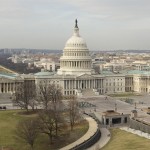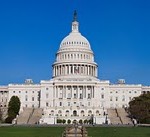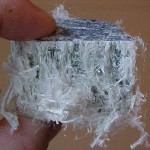 For those of you who are following this blog, I’ll apologize for letting nearly two months slip away since the previous post. The reason has to do with my co-blogger, Eric Laury. After passing both the Pennsylvania and New Jersey bar exams, Eric took a job in a law firm in Denver, which means he is now studying for the Colorado bar exam. I have every reason to believe that Eric will resume writing for this blog after things settled down for him, but likely as an occasional blogger. I congratulate him on his success and look forward to our continued collaboration.
For those of you who are following this blog, I’ll apologize for letting nearly two months slip away since the previous post. The reason has to do with my co-blogger, Eric Laury. After passing both the Pennsylvania and New Jersey bar exams, Eric took a job in a law firm in Denver, which means he is now studying for the Colorado bar exam. I have every reason to believe that Eric will resume writing for this blog after things settled down for him, but likely as an occasional blogger. I congratulate him on his success and look forward to our continued collaboration.
Among this week’s news in the world of nanotechnology law is word that the U.S. government is in the grip of regulatory confusion. If you’ve been reading this blog, that’s nothing new, but there now seems to be official consensus that there is no consensus.
This consensus on non-consensus was a major focus of a workshop in Washington on December 13 and 14 organized by the National Institute of Standards and Technology (NIST) and the American National Standards Institute (ANSI). One of the themes of the workshop came from several participants, including EPA which noted that there is no agreement internationally on either toxicity testing protocols or the proper methodology for measuring release of nanoparticles into the environment. A similar theme was pressed by the CPSC. The chair of the Nanotechnology Panel of the American Chemistry Council echoed the concerns of the governmental agencies, emphasizing that industry needs to have clear rules to develop safe products.
Moreover, the participants expressed concern for the disconnect between the various sectors – government, business, and consumers – over the need for and type of regulation for the products of nanotechnology.
All well and good. But this workshop has that déjà vu feeling. Haven’t we been hearing this over and over for some time now? It also has a certain circular logic to it, which goes something like this: “Before we regulate, we need to know what the hazards are and what to regulate, but if we can’t agree on how to assess the hazards and what needs to be regulated, then we can’t regulate.”
Think about it.
The following article reported the events of the workshop:
Pat Rizzuto, Regulators Say They Lack Consensus-Based Standards for Key Aspects of Nanomaterials, 241 Daily Envt’l Rep. (BNA) A-8 (Dec. 15, 2011) (by subscription only)


 In a June 9, 2011, memorandum to the heads of U.S. executive departments and agencies, entitled Policy Principles for the U.S. Decision-Making Concerning Regulation and Oversight of Applications of Nanotechnology and Nanomaterials, the White House confirmed its commitment to a “science-based” approach to health and safety matters related to nanotechnology. The memorandum issued from the Office of Science and Technology Policy, the Office of Management and Budget, and the Office of the U.S. Trade Representative. The memorandum described its approach as
In a June 9, 2011, memorandum to the heads of U.S. executive departments and agencies, entitled Policy Principles for the U.S. Decision-Making Concerning Regulation and Oversight of Applications of Nanotechnology and Nanomaterials, the White House confirmed its commitment to a “science-based” approach to health and safety matters related to nanotechnology. The memorandum issued from the Office of Science and Technology Policy, the Office of Management and Budget, and the Office of the U.S. Trade Representative. The memorandum described its approach as Listening to the speakers at the American Bar Association section webinar on the subject of “Nano Governance: The Current State of Federal, State, and International Regulation,” discussed in
Listening to the speakers at the American Bar Association section webinar on the subject of “Nano Governance: The Current State of Federal, State, and International Regulation,” discussed in  Last week, the news media reported the results of a study conducted by Navy Capt. Mark Lyles, the chair of medical sciences and biotechnology at the Center for Naval Warfare Studies at the Naval War College, which purported to explain the cause of a wide range of symptoms and illnesses experienced by current and former U.S. troops in Iraq, Afghanistan, and Kuwait. Minute dust particles containing toxic metals, bacteria, and other substances may be responsible for such health problems as cancers, respiratory ailments, heart disease, and neurological conditions in vets. The key to the particular toxicity of the substances, as contained in the dust, is thought to be the tiny size of the particles. For various reasons, the dust in that region of the world is much finer than ordinary dust, and the tiny particles are easily inhaled deep into the lungs, where disease processes can begin.
Last week, the news media reported the results of a study conducted by Navy Capt. Mark Lyles, the chair of medical sciences and biotechnology at the Center for Naval Warfare Studies at the Naval War College, which purported to explain the cause of a wide range of symptoms and illnesses experienced by current and former U.S. troops in Iraq, Afghanistan, and Kuwait. Minute dust particles containing toxic metals, bacteria, and other substances may be responsible for such health problems as cancers, respiratory ailments, heart disease, and neurological conditions in vets. The key to the particular toxicity of the substances, as contained in the dust, is thought to be the tiny size of the particles. For various reasons, the dust in that region of the world is much finer than ordinary dust, and the tiny particles are easily inhaled deep into the lungs, where disease processes can begin. Earlier
Earlier This post continues the discussions in earlier posts about evidentiary
This post continues the discussions in earlier posts about evidentiary 